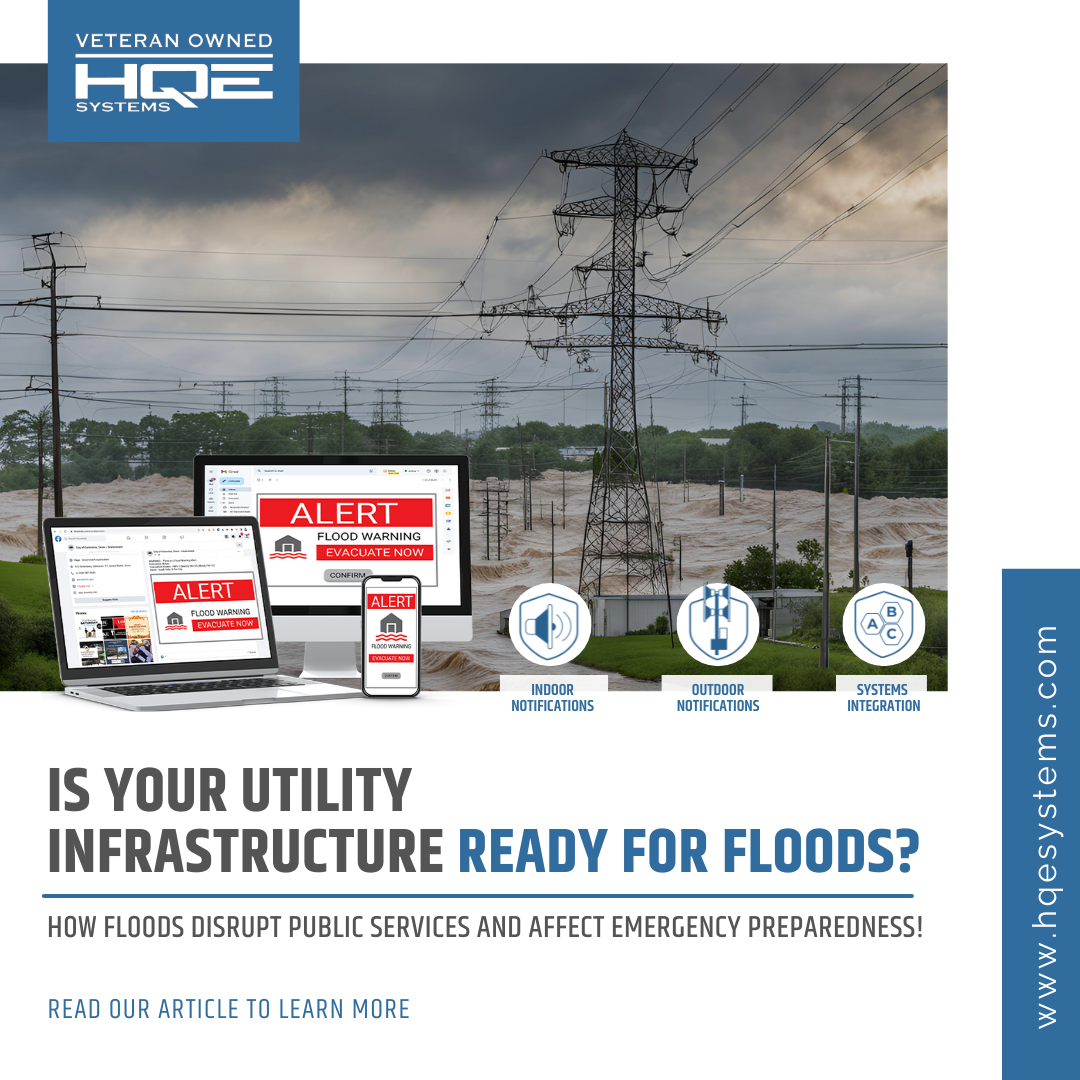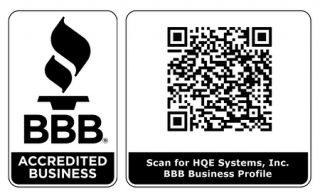Is Your Utility Infrastructure Ready for Floods? How Floods Disrupt Public Services and Affect Emergency Preparedness!
The Growing Challenge of Floods on Public Utilities and Emergency Preparedness
Flooding has become an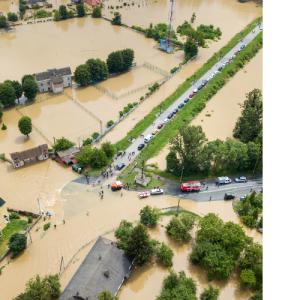 increasingly frequent and severe issue due to climate change, causing significant disruptions worldwide. The rising global temperatures contribute to more intense and frequent storms, leading to greater flooding risks. These events have a profound impact on various sectors, particularly the public utilities industry, which includes essential services such as electricity, water supply, gas, and telecommunications.
increasingly frequent and severe issue due to climate change, causing significant disruptions worldwide. The rising global temperatures contribute to more intense and frequent storms, leading to greater flooding risks. These events have a profound impact on various sectors, particularly the public utilities industry, which includes essential services such as electricity, water supply, gas, and telecommunications.
When floods occur, the damage to public utilities can be extensive, leading to prolonged outages and service disruptions. Power plants, substations, water treatment facilities, and communication networks are all vulnerable to floodwaters. The failure of these critical infrastructures not only hampers daily life but also severely affects emergency preparedness and response capabilities. For instance, without electricity, emergency alert systems cannot function effectively, and communication channels are disrupted, delaying critical information dissemination.
This blog aims to explore the impact of floods on public utilities and how these disruptions affect emergency preparedness. We will delve into the challenges faced by the utilities sector during flood events, examine real-world case studies, and discuss technological solutions to mitigate these impacts. By understanding these issues, we can better prepare for future floods and ensure the resilience of our public services and emergency response systems.
Section 1: Understanding Floods and Their Increasing Frequency
Flooding is a natural disaster with both natural and man-made causes. Natural causes of flooding include heavy rainfall, storm surges, and rapid snowmelt. Heavy rainfall can overwhelm riverbanks and urban drainage systems, leading to widespread water overflow. Storm surges, typically driven by strong winds from hurricanes or typhoons, push seawater onto land, inundating coastal areas. Snowmelt floods occur when a large volume of snow and ice melts quickly due to rising temperatures, causing rivers to swell.
Man-made factors exacerbate the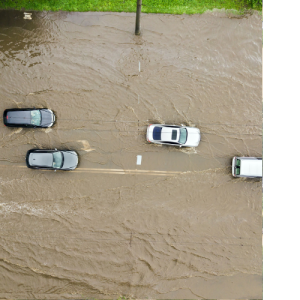 risk of flooding. Urbanization replaces natural landscapes with impermeable surfaces like concrete, which hinders water absorption and increases surface runoff. Deforestation reduces the land’s ability to absorb rainfall, while poorly planned infrastructure and inadequate drainage systems can fail during heavy rainfall events. Additionally, climate change has intensified both natural and man-made factors, resulting in more frequent and severe flooding globally.
risk of flooding. Urbanization replaces natural landscapes with impermeable surfaces like concrete, which hinders water absorption and increases surface runoff. Deforestation reduces the land’s ability to absorb rainfall, while poorly planned infrastructure and inadequate drainage systems can fail during heavy rainfall events. Additionally, climate change has intensified both natural and man-made factors, resulting in more frequent and severe flooding globally.
The increasing frequency of floods is closely linked to climate change. Rising global temperatures contribute to more intense and prolonged rainfall events. Warmer sea temperatures lead to stronger and more destructive storms and hurricanes. According to the Intergovernmental Panel on Climate Change (IPCC), the frequency and intensity of heavy precipitation events have increased and are expected to continue rising as the climate changes.
Recent statistics and examples illustrate the growing impact of floods. The World Resources Institute reported that the number of people affected by river flooding worldwide could rise from 65 million annually in 2010 to 132 million by 2030 due to climate change and socioeconomic factors. In the U.S., 2020 saw a record 22 separate billion-dollar weather and climate disasters, many involving significant flooding.
A recent example is the devastating floods in the Midwest in April 2024, which led to the deaths of at least two people and forced widespread evacuations. The floods submerged homes, disrupted utilities, and required substantial emergency response efforts (NBC News, 2024). In June 2024, South Florida experienced severe flash floods caused by intense storms, resulting in significant damage to infrastructure and affecting thousands of residents (WUSF, 2024).
These examples highlight the urgent need for improved flood management and resilient infrastructure. Understanding the causes and impacts of floods is crucial for developing effective mitigation and adaptation strategies to protect public utilities and ensure emergency preparedness. Integrating advanced technologies and proactive measures can help communities better withstand and recover from the increasing threat of floods.
Section 2: The Role of Public Utilities in Modern Society
Public utilities are essential services that include electricity, water, gas, and telecommunications. These utilities form the backbone of modern society, ensuring that basic needs are met and supporting critical infrastructure across various sectors.
services that include electricity, water, gas, and telecommunications. These utilities form the backbone of modern society, ensuring that basic needs are met and supporting critical infrastructure across various sectors.
Electricity
Electricity is a fundamental utility that powers homes, businesses, and industries. It is crucial for lighting, heating, cooling, and operating appliances and machinery. The reliability of the electrical grid is vital for the functioning of other utilities and services, including water supply and telecommunications. Power outages can disrupt daily activities, hinder economic productivity, and compromise safety.
Water Supply
Water supply services provide clean and safe water for drinking, cooking, cleaning, and sanitation. Water utilities manage the extraction, treatment, and distribution of water to households and businesses. They also handle wastewater treatment and sewage management, ensuring that water resources are used sustainably and that public health is protected.
Gas
Gas utilities supply natural gas used for heating, cooking, and powering industrial processes. Natural gas is a cleaner alternative to coal and oil, making it an essential component of efforts to reduce greenhouse gas emissions. Gas pipelines and distribution networks must be maintained to prevent leaks and ensure safe delivery to consumers.
Telecommunications
Telecommunications services include telephone, internet, and broadcast services, which are critical for communication and information exchange. Reliable telecommunications infrastructure supports remote work, education, emergency services, and social connectivity. It enables the rapid dissemination of information, which is crucial during emergencies. (Axios, 2024)
Importance in Daily Life and Critical Infrastructure
Public utilities are indispensable in daily life, providing the basic necessities for living and working. Electricity powers homes and businesses, water supply ensures access to clean water, gas provides energy for heating and cooking, and telecommunications enable communication and access to information. These utilities support economic activities, enhance quality of life, and contribute to public health and safety.
Dependency of Other Sectors on Public Utilities
Healthcare Healthcare facilities rely heavily on public utilities to operate effectively. Hospitals and clinics need a constant supply of electricity to power medical equipment, lighting, and climate control systems. Water is essential for sanitation, sterilization, and patient care. Telecommunications are crucial for maintaining patient records, coordinating care, and providing telemedicine services. Any disruption in these utilities can jeopardize patient care and safety.
facilities rely heavily on public utilities to operate effectively. Hospitals and clinics need a constant supply of electricity to power medical equipment, lighting, and climate control systems. Water is essential for sanitation, sterilization, and patient care. Telecommunications are crucial for maintaining patient records, coordinating care, and providing telemedicine services. Any disruption in these utilities can jeopardize patient care and safety.
Transportation The transportation sector depends on electricity and telecommunications for efficient operation. Traffic management systems, public transportation networks, and electric vehicle charging stations all require reliable power and communication links. Water utilities are also important for maintaining infrastructure, such as cleaning roads and supporting public amenities. Disruptions in utilities can lead to delays, safety hazards, and increased congestion.
Education Educational institutions, from primary schools to universities, require electricity and telecommunications to support teaching, learning, and administrative functions. Classrooms and laboratories need power for lighting, computers, and other equipment. The internet is essential for accessing educational resources, conducting research, and facilitating online learning. Water and gas utilities are necessary for maintaining campus facilities and ensuring a safe environment for students and staff.
In summary, public utilities are the lifeblood of modern society, enabling essential functions and supporting critical infrastructure across various sectors. The dependency of healthcare, transportation, education, and other sectors on these utilities underscores their importance. Ensuring the resilience and reliability of public utilities is crucial for the well-being and safety of communities, especially in the face of challenges like flooding.
Section 3: How Floods Impact Public Utilities
Floods can have devastating effects on public utilities, disrupting essential services and posing significant risks to public safety and infrastructure. This section examines the impact of flooding on electricity, water supply and sanitation, gas, and telecommunications, providing examples of past incidents to illustrate these effects.
Electricity
 Flooding can severely damage power plants, substations, and distribution networks. Power plants located near rivers or coastal areas are particularly vulnerable to flooding. When floodwaters inundate power plants, it can lead to equipment failure, short circuits, and long-term damage to infrastructure.
Flooding can severely damage power plants, substations, and distribution networks. Power plants located near rivers or coastal areas are particularly vulnerable to flooding. When floodwaters inundate power plants, it can lead to equipment failure, short circuits, and long-term damage to infrastructure.
Substations, which are crucial for distributing electricity from power plants to consumers, are also at high risk during floods. Water intrusion can cause electrical faults and equipment failures, leading to power outages. The Midwest floods in April 2024, for example, damaged several substations, disrupting electricity supply to thousands of homes and businesses and necessitating extensive repairs (NBC News, 2024)
Distribution networks, including overhead power lines and underground cables, can be impacted by flooding. Floodwaters can erode the ground supporting poles and towers, causing them to collapse. Underground cables can be damaged by water ingress, leading to short circuits and service disruptions.
Power outages during floods can have a profound impact on the operation of emergency alert systems. Electricity is vital for powering the infrastructure that supports these systems, including sirens, broadcasting equipment, and digital communication platforms. Without electricity, these systems cannot function properly, leaving residents without crucial information.
For instance, during the Midwest floods in June 2024, widespread power outages disrupted the operation of emergency alert systems. With substations and power lines submerged, many communities were left without power, hindering their ability to receive timely warnings and updates (USA Today, 2024). Additionally, power outages affect the ability to charge communication devices such as mobile phones, radios, and laptops, which are essential for receiving alerts and staying informed.
In summary, power outages during floods can significantly hinder emergency response efforts by disabling critical communication infrastructure. Ensuring that electricity supply remains resilient and implementing backup power solutions are essential strategies to maintain effective emergency alert systems during flood events.
Water Supply and Sanitation
Flooding can contaminate water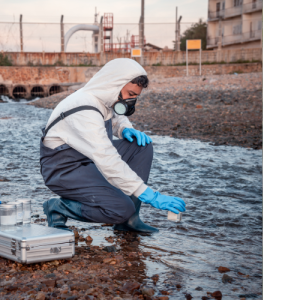 supplies and damage sewage systems, posing serious public health risks. When floodwaters enter water treatment plants, they can overwhelm the filtration and purification processes, allowing contaminants to enter the drinking water supply. This contamination can lead to outbreaks of waterborne diseases such as cholera and dysentery.
supplies and damage sewage systems, posing serious public health risks. When floodwaters enter water treatment plants, they can overwhelm the filtration and purification processes, allowing contaminants to enter the drinking water supply. This contamination can lead to outbreaks of waterborne diseases such as cholera and dysentery.
For example, during the South Florida floods in June 2024, heavy rains caused significant flooding that overwhelmed local water treatment facilities. As a result, contaminants entered the water supply, prompting boil water advisories for affected residents (WUSF, 2024). Contaminated water supplies pose a significant risk to public health, as they can lead to the spread of waterborne diseases.
Sewage systems are also highly vulnerable to flooding. Floodwaters can cause sewer overflows, mixing untreated sewage with floodwaters and spreading harmful pathogens. Additionally, the physical infrastructure of sewage systems, such as pipes and treatment plants, can be damaged by the force of floodwaters and debris. This damage can result in long-term service disruptions and costly repairs.
A compromised water supply during floods can also affect emergency services and shelter operations. Water is essential for maintaining hygiene, providing drinking water, and supporting medical services in shelters and emergency response centers. When floods contaminate water supplies or damage water infrastructure, it can lead to water shortages and health hazards.
Emergency shelters, which rely on clean water for sanitation and medical care, are particularly vulnerable. During the South Florida floods in June 2024, local water treatment facilities were overwhelmed, leading to contaminated water supplies and boil water advisories for residents (Weather.gov, 2024). Such situations complicate shelter operations and strain emergency resources, making it harder to provide safe refuge for affected individuals.
By understanding these impacts on water supply and sanitation, communities can better prepare and implement strategies to mitigate the risks associated with flooding.
Gas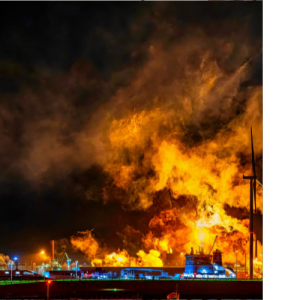
Flooding poses significant risks to gas utilities, including the potential for gas leaks and explosions. Gas pipelines, particularly those running underground, can be damaged by the erosive force of floodwaters. When pipelines are exposed or broken, it can lead to dangerous gas leaks. Floodwaters can also displace soil and rocks, exerting pressure on pipelines and causing fractures.
In addition to pipeline damage, gas meters and distribution systems can be affected by flooding. Water ingress can cause malfunctions in gas meters, leading to inaccurate readings and potential gas buildup. The risk of gas explosions is heightened when electrical equipment and gas infrastructure are both damaged by flooding, as electrical sparks can ignite leaking gas.
Telecommunications
Telecommunications networks, including mobile and internet services, are crucial for communication and emergency response during disasters. Flooding can disrupt these networks by damaging infrastructure such as cell towers, underground cables, and data centers. Water intrusion can cause short circuits and equipment failures, leading to service outages.
including mobile and internet services, are crucial for communication and emergency response during disasters. Flooding can disrupt these networks by damaging infrastructure such as cell towers, underground cables, and data centers. Water intrusion can cause short circuits and equipment failures, leading to service outages.
For example, during the 2024 Midwest floods, telecommunications infrastructure was significantly affected, with cell towers and data centers submerged in floodwaters. This disruption hindered communication efforts and delayed the dissemination of emergency alerts, complicating rescue and relief operations (NBC News, 2024). Similarly, during the South Florida floods in June 2024, telecommunications infrastructure was severely impacted, delaying the dissemination of emergency alerts and complicating rescue operations (Weather.gov, 2024) (Axios, 2024) . Without reliable communication networks, emergency managers struggle to coordinate responses and keep the public informed.
In summary, floods can have profound impacts on public utilities, disrupting electricity, water supply, gas, and telecommunications services. These disruptions not only affect daily life but also impede emergency preparedness and response efforts. By understanding these impacts, communities can better prepare and implement strategies to mitigate the risks associated with flooding.
The Need for Resilient Emergency Alert Systems
The cascading effects of floods on public utilities highlight the need for resilient and adaptable emergency alert systems. Ensuring that these systems can operate independently of disrupted utilities is crucial for effective disaster management. HQE Systems solutions include:
- Backup Power Sources: Utilizing generators, solar power, and battery backups to maintain power for emergency alert systems during outages.
- Redundant Communication Channels: Implementing multiple communication channels (e.g., satellite phones, two-way radios) to ensure alerts can be disseminated even if primary networks fail.
- Water Resilience: Protecting water infrastructure from flood damage and ensuring access to clean water in emergency shelters.
In conclusion, the failure of public utilities during floods significantly hampers the effectiveness of emergency alert systems. By understanding these vulnerabilities and implementing resilient solutions, communities can enhance their disaster preparedness and ensure that critical information reaches those in need, even in the most challenging circumstances.

Section 7: HQE Systems’ Role in Enhancing Flood Resilience and Emergency Alert Systems
Introduction to HQE Systems
HQE Systems, Inc., headquartered in Temecula, California, is a leading provider of GovTech solutions, specializing in AI and ML-enhanced life safety and security systems. As a certified Service Disabled Veteran Owned Small Business (SDVOSB), Minority Business Enterprise (MBE), and Disadvantaged Business Enterprise (DBE), HQE Systems is dedicated to advancing public safety through state-of-the-art technology. The company’s mission is to provide innovative solutions that ensure the highest standards of safety and security for municipalities, schools, healthcare facilities, and various industries.
Enhancing the Resilience of Public Utilities and Emergency Alert Systems
HQE Systems leverages cutting-edge technologies to enhance the resilience of public utilities and emergency alert systems, ensuring they remain operational during and after flood events. The company offers a comprehensive suite of solutions designed to address the challenges posed by natural disasters, including floods.
Integrated Emergency Management Platforms
Management Platforms
The company’s integrated emergency management platforms offer a centralized solution for managing all aspects of disaster response. These platforms integrate various emergency systems, including mass notification, surveillance, access control, and communication networks, into a unified interface. This integration ensures seamless coordination and efficient management of emergency operations. During a flood, the platform can automatically trigger alerts, monitor the status of public utilities, and coordinate response efforts, thereby enhancing overall disaster resilience.
AI and ML for Predictive Analytics and Early Warning
HQE Systems utilizes advanced AI and ML technologies to enhance predictive analytics and early warning capabilities. These technologies analyze vast amounts of data from various sources, including weather forecasts, historical flood data, and real-time sensor inputs, to predict potential flood events. By identifying patterns and trends, the system can provide early warnings, allowing communities to take proactive measures to protect critical infrastructure and public utilities. This predictive approach helps mitigate the impact of floods by enabling timely evacuations and resource mobilization.
Real-Time Communication Networks and Backup Systems
HQE Systems provides robust communication networks that are critical for disseminating emergency alerts and coordinating response efforts during floods. The company’s solutions include:
- High-Powered Speaker
 Arrays (HPSA): These outdoor warning sirens deliver clear voice and tone alerts across wide areas, ensuring that even those in remote locations receive timely warnings.
Arrays (HPSA): These outdoor warning sirens deliver clear voice and tone alerts across wide areas, ensuring that even those in remote locations receive timely warnings. - Versatile Communication Compatibility: The systems support various communication channels, including satellite, cellular, and secure mesh networks, ensuring reliable connectivity even when traditional networks are compromised.
- Low Power Operation: HQE Systems’ emergency alert systems are designed to run efficiently on minimal power. This capability ensures that critical communication and alerting functions remain operational during extended power outages, utilizing backup power sources such as generators, solar panels, and battery backups. This low-power operation is crucial for maintaining functionality during prolonged disaster scenarios.
Commitment to Client Success
HQE Systems is committed to delivering customized solutions that meet the unique needs of each client. Their veteran-led team brings a wealth of experience and a deep understanding of the challenges faced by emergency managers. By providing tailored solutions and comprehensive support, HQE Systems helps organizations enhance their resilience to floods and other natural disasters, ensuring the safety and well-being of their communities.
In conclusion, HQE Systems plays a vital role in enhancing flood resilience and emergency preparedness through innovative AI and ML technologies, integrated emergency management platforms, and reliable communication networks. By leveraging these advanced solutions, communities can better protect their public utilities and ensure effective disaster response, ultimately safeguarding lives and property in the face of increasing flood risks.
HQE Systems is a certified Veteran Owned Company. For more information about HQE Systems Inc. and its emergency management, electronic security, and integration solutions, please visit www.hqesystems.com.

Contact: David Ditto (Early Warning Systems Subject Matter Expert)
Email: David.Ditto@hqesystems.com
Phone Number: (843) 872-7020
____________________
HQE Systems, Inc. | HQE is a Minority-Owned Service Disabled Veteran Owned Small Business (SDVOSB) providing full solutions for: Mass Notification Systems, Electronic Security Systems, Software Development Services, Contract Support, and Prototyping Services. As a brand-agnostic solutions provider, HQE prides itself in providing the BEST solution for the project. HQE possesses over 30+ factory certifications and reseller licenses to ensure our clients receive the highest quality service at the ideal budget. HQE can provide full design, installation, integrations, upgrades, and long-term maintenance support for any size and scope project.

